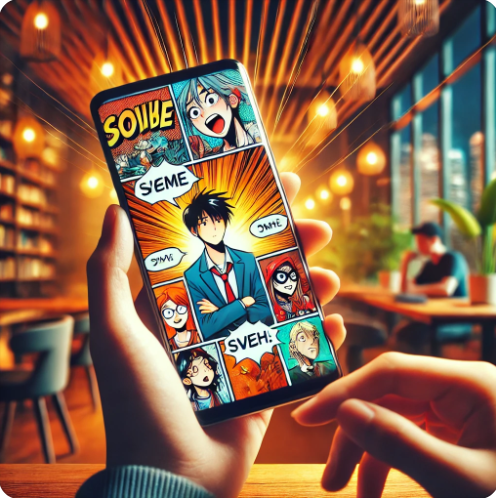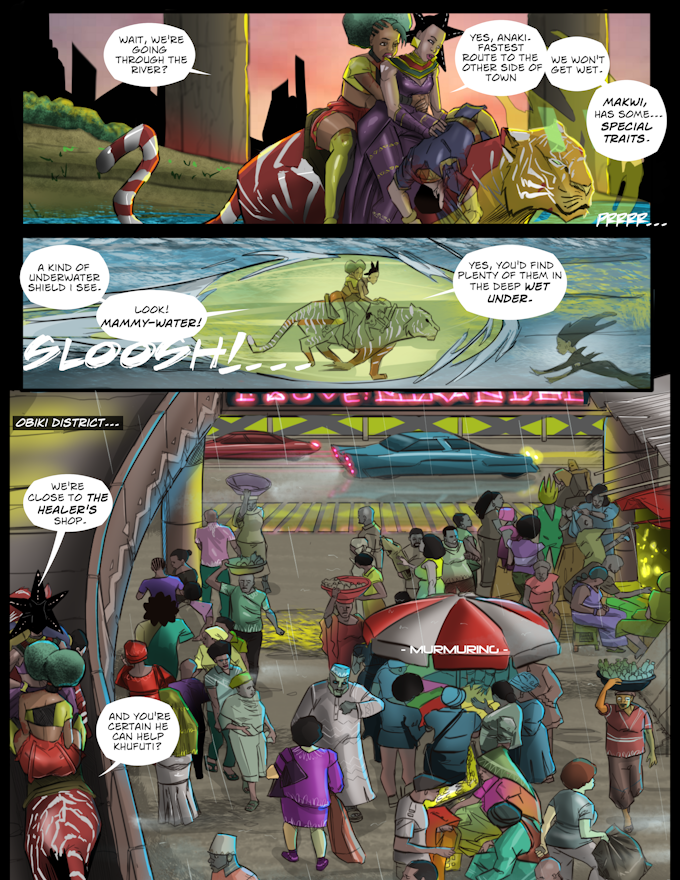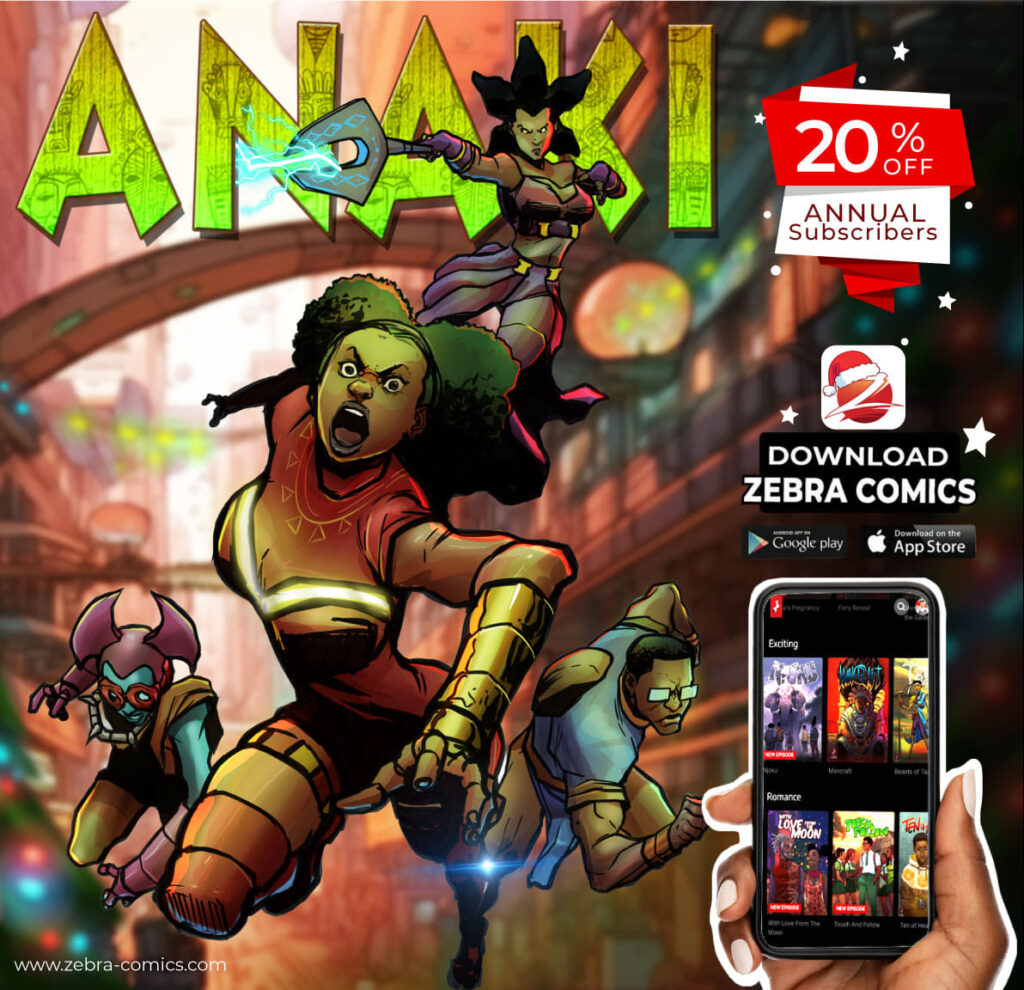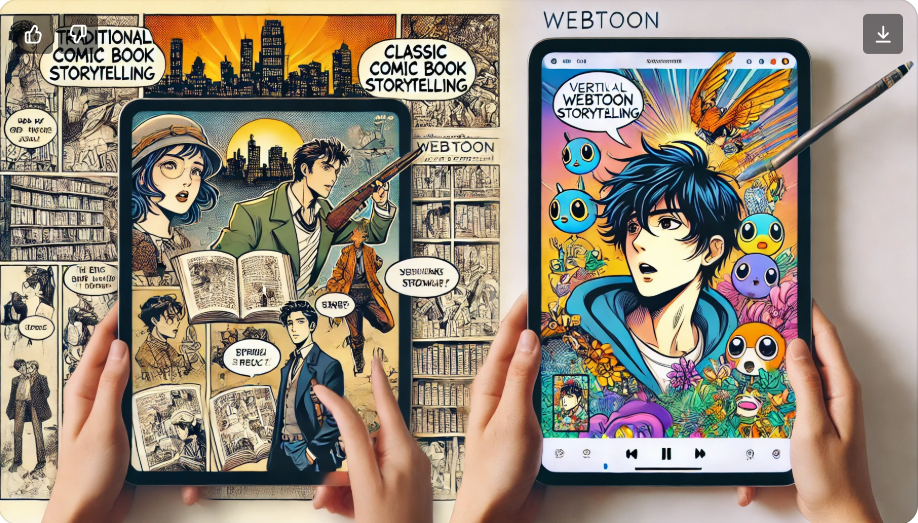If you’re a fan of captivating stories paired with stunning visuals, chances are you’ve spent countless hours diving into the world of comics and webtoons. These two mediums may seem similar at first glance, but their storytelling techniques, formats, and audience experiences are strikingly different. Whether you’re new to these visual narratives or a seasoned fan, understanding these differences can deepen your appreciation for both mediums and even help creators craft stories that resonate.
Let’s explore the fascinating world of comics and webtoons, uncovering what makes each unique and the storytelling techniques that keep fans coming back for more.
The Basics: What Are Comics and Webtoons?
Before diving into the differences, let’s define these two storytelling formats:
Comics: A medium that has existed for decades, comics are typically printed in magazines, newspapers, or standalone books (like graphic novels). They use sequential art to tell stories, ranging from superhero epics to slice-of-life dramas. Formats vary widely, from single-panel comics to full-page spreads.
Webtoons: A digital-first format that originated in South Korea, webtoons are designed for scrolling on smartphones and tablets. They feature a vertical layout that allows readers to seamlessly move from one panel to the next, creating a smooth storytelling experience tailored for mobile consumption.
Key Differences Between Comics and Webtoons
1. Format and Layout:
Comics: Traditional comics are designed for print. Pages are divided into multiple panels of varying shapes and sizes. Artists often play with the layout, using overlapping panels or splash pages to create dramatic effects. Readers experience the story by scanning across the page from left to right (or right to left in manga).
Webtoons: The vertical scroll is the hallmark of webtoons. Instead of flipping pages, readers swipe down, consuming the story one panel at a time. This layout allows for dramatic pacing, as creators can insert long gaps or fade-out effects between scenes to heighten tension or emphasize emotions.
Example: Imagine a superhero’s dramatic entrance. In comics, this might be depicted with a full-page splash. In webtoons, the buildup could stretch across several scrolling panels, creating suspense as the hero’s silhouette gradually comes into view.

2. Reading Experience
Comics: Reading a comic feels like holding a piece of art in your hands. The tactile experience of turning pages and the ability to view an entire page at once gives readers control over pacing. Readers can linger on intricate details or jump ahead if they’re impatient.
Webtoons: The digital format guides the reader’s pace. Since webtoons are designed for scrolling, creators control the flow of the story more tightly, using blank spaces or elongated panels to direct attention. This makes webtoons highly immersive, especially for action sequences or emotional moments.
3. Art Style and Presentation
Comics: Comics often feature highly detailed art, with intricate backgrounds and text-heavy dialogue bubbles. The use of color varies—some comics are black and white (like many manga), while others employ vibrant color palettes. The art style can range from realistic to highly stylized.
Webtoons: Webtoon art tends to be simpler and more streamlined, optimized for digital screens. The vertical format encourages the use of large, easy-to-read panels and bold colors that pop on mobile devices. Speech bubbles are often minimalist, ensuring they don’t overwhelm the visuals.
4. Publishing and Accessibility
Comics: Traditional comics are typically published by large companies (like Marvel, DC, or Shueisha) or independent creators through print and online platforms. While physical comics have a nostalgic charm, they can be harder to access, requiring visits to specialty stores or online orders.
Webtoons: Accessibility is one of webtoons’ greatest strengths. Platforms like Webtoon, Tapas, and Zebra Comics make it easy for readers to discover and enjoy stories for free (often supported by ads or in-app purchases). The global reach of webtoons has democratized storytelling, allowing creators from diverse backgrounds to share their voices.

5. Audience and Genres
Comics: Traditional comics often cater to niche audiences. Superheroes dominate the Western market, while manga in Japan covers an incredibly diverse range of genres, from romance to horror to sports.
Webtoons: Webtoons have broad appeal, thanks to their accessibility and mobile-friendly format. They’re particularly popular among younger readers and are known for covering contemporary, relatable themes like romance, slice-of-life, and fantasy with a modern twist.
Storytelling Techniques: How Comics and Webtoons Hook Their Readers
1. Pacing and Panel Flow
In comics, artists use panel size and placement to guide readers. A rapid sequence of small panels creates a sense of urgency, while larger panels slow the pace for dramatic moments. Page turns are often used as cliffhangers, leaving readers eager to see what happens next.
In webtoons, pacing is achieved through scrolling. Creators can elongate moments by spacing out panels, creating a cinematic feel. The scrolling format allows for unexpected reveals, such as a sudden plot twist or a jump scare, as readers have no way to see what lies ahead.
2. Use of Color and Lighting
Comics: Artists use color schemes and shading to set the tone. For example, darker palettes are common in noir or horror comics, while bright, saturated colors dominate superhero stories.
Webtoons: Digital coloring techniques shine in webtoons. Gradients, glowing effects, and dynamic lighting create visually stunning scenes. Night skies, glowing magical elements, or dramatic sunsets are often used to evoke emotion.
3. Character Development
Comics: With decades of history, many comic characters (like Batman or Spider-Man) have deeply developed backstories that unfold across multiple issues. Relationships, motivations, and arcs are explored in depth.
Webtoons: Since webtoons often follow a more concise format, character development happens quickly. Creators rely on relatable, instantly likable protagonists and dramatic conflicts to hook readers within the first few episodes.
4. Dialogue and Narration
Comics: Thought bubbles, captions, and dialogue are central to comics. Narration often provides insight into a character’s inner thoughts or offers exposition, adding layers to the story.
Webtoons: Webtoons favor concise dialogue and visual storytelling. Subtle expressions, body language, and panel transitions convey much of the story, reducing the reliance on text.

Why Both Formats Matter
Whether you prefer the timeless charm of comics or the innovative storytelling of webtoons, both mediums offer unique ways to experience stories. Comics provide a rich, tactile connection to art and storytelling, while webtoons deliver fast, immersive narratives perfect for our digital age.
At Zebra Comics, we celebrate the diversity of storytelling across these formats. As an African platform for webcomics and webtoons, we aim to showcase stories that reflect our cultures, dreams, and adventures. From thrilling superhero tales to heartwarming romance, there’s something for everyone.
Final Thoughts
The world of comics and webtoons is ever-evolving, blending tradition with innovation. As a fan, there’s no need to choose sides—embrace both and let their unique styles transport you to new worlds. And if you’re a creator, draw inspiration from the strengths of each medium to craft stories that resonate with your audience.
Ready to dive into a world of unforgettable webcomics and webtoons? Visit Zebra Comics today and discover the stories that are reshaping Africa’s narrative landscape.

Comments
4 responses to “Storytelling in Comics vs. Webtoons: Key Differences and Techniques”
Hi there to all, the contents existing at this website
are actually amazing for peoplpe experience, well, keep up thhe nice work fellows.
I think this is one of the most significant information for me.
And i’m glad reading your article. But should remark
on some general things, The site style is great, the articles is really great : D.
Good job, cheers
Hi there, I enjoy rewading all of your post.
I likee to write a little comment to support you. http://Boyarka-Inform.com/
I’m gone to say to myy little brother, that he should also go to see this web site on regular basis too get updated from latest
reports.